For me, discovering Alexander Schmemann and liturgical theology was a natural outgrowth from other avenues of reading and research. My introduction came from two theological fronts: the ecclesio-centric ethics of Stanley Hauerwas (exemplified by the Mass-shaped structure of his and Samuel Wells’ Blackwell Companion to Christian Ethics) and the formational theology of James K.A. Smith (via his Cultural Liturgies series, especially the middle one, Imagining the Kingdom). Under both these theological avenues, divergent in subfield (ethics and ecclesiology for Hauerwas, postmodern philosophy and formation for Smith), Schmemann’s presence could be felt. Underneath Hauerwas, there is that sense that the theology of the Church manifests in her liturgy for the sake of forming believers to engage particular ethical quandaries; underneath Smith, the sense that human being’s embodied (incarnational) nature confronts the disembodied (“excarnational”) character of modernity.
Naturally, I eventually turned to the source for some of these claims, primarily For the Life of the World, Schmemann’s famous short essay on sacrament, mission, and Church. This work proved to be deeply stimulating to me, so much so that in the year I served as pastor of a small rural congregation I preached through a month-and-a-half sermon series on the topic of the “Feast of God,” drawing upon Schmemann’s writings and visions of the heavenly feast written in Isaiah, Matthew, and Revelation. (Looking back, I feel a little shocked that I was so brazen to preach such a series in a Baptist church, of all places!)
Porter C. Taylor’s new collection of essays serving as a posthumous Festschrift for Schmemann delves beyond the Orthodox priest and professor’s famous one-offs, analyzing elements of his academic writings, his personal journals, and his uncompleted works. The scholars represented in this work demonstrate the broad receptivity of Schmemann, including Catholic and Orthodox (as one might expect), Anglican, Methodist, and even Evangelical authors, working in both academic and seminary settings.
For the Life of Liturgical Theology
 First and foremost, the main beneficiaries of this work will be liturgical theologians (and those directly impacted by their work). There is a good dash of the history of liturgical theology spread throughout the varied essays, especially in the first, historical, section, that will help the reader orient themselves with regards to Schmemann’s initial impact and his influence. It will be shock, I suspect, to those well-versed in liturgical theology as it has grown in today’s time, to discover how relatively taken-for-granted the liturgy of the Church (whether Catholic or Orthodox or Protestant) was in Schmemann’s time. But even more surprising is how Schmemann’s initial conflict was over the blasé approach to the liturgy within his own Orthodox Church in America. The fact that he saw this as his primary task, confronting, as he saw it, divisive nationalisms within American Orthodoxy’s over-diverse liturgical practices, and that he first wrote For the Life of the World as an ecumenical address introduces us to a Schmemann who was incredibly pastoral, active, and public in his theological work.
First and foremost, the main beneficiaries of this work will be liturgical theologians (and those directly impacted by their work). There is a good dash of the history of liturgical theology spread throughout the varied essays, especially in the first, historical, section, that will help the reader orient themselves with regards to Schmemann’s initial impact and his influence. It will be shock, I suspect, to those well-versed in liturgical theology as it has grown in today’s time, to discover how relatively taken-for-granted the liturgy of the Church (whether Catholic or Orthodox or Protestant) was in Schmemann’s time. But even more surprising is how Schmemann’s initial conflict was over the blasé approach to the liturgy within his own Orthodox Church in America. The fact that he saw this as his primary task, confronting, as he saw it, divisive nationalisms within American Orthodoxy’s over-diverse liturgical practices, and that he first wrote For the Life of the World as an ecumenical address introduces us to a Schmemann who was incredibly pastoral, active, and public in his theological work.
This explains, on the one hand, the at times oversimple dichotomizations of For the Life of the World, between modernity and Christianity, between the secular and the sacred. (Of course, Schmemann is writing decades before Charles Taylor’s A Secular Age.) But there is a difference between piercing philosophical-theological critique and more generalized theology written for a popular (and diverse) audience. The aspects of For the Life of the World that feel most criticizable from an academic perspective make perfect sense written by a pastor-teacher seeking to mobilize the Church’s worship.
Schmemann’s more serious works on the topic, as a result, are at the center of most of this collection’s essays (namely Introduction to Liturgical Theology and The Eucharist) as the writers wrestle with his theological and academic reception. From these, the collection constellates a multifarious and complex picture of his thought and his unique contributions to the grounds of modern liturgical theology (and not without some troubles and problematics!), including the relationship between Eucharist and the world, the formation of the congregation through liturgy, and the historical-cosmological valences of sacrament.
For the Sake of the Church[‘s Theology?]
 Most of the essays in this collection gesture, at least, at Schmemann’s ecclesio-missiological purpose. That is, that the worship of the Church historically said something both about those gathered and sharing it as well as something about the world outside its walls (the “world” of For the Sake of the World). Sister Zimmerman’s dense and poignant reflection on pastoral liturgical theology and Fagerberg’s missiological interventions alongside (and sometimes in contradiction to) Schmemann both work at the level of the Church and call for pastoral reflection and leadership.
Most of the essays in this collection gesture, at least, at Schmemann’s ecclesio-missiological purpose. That is, that the worship of the Church historically said something both about those gathered and sharing it as well as something about the world outside its walls (the “world” of For the Sake of the World). Sister Zimmerman’s dense and poignant reflection on pastoral liturgical theology and Fagerberg’s missiological interventions alongside (and sometimes in contradiction to) Schmemann both work at the level of the Church and call for pastoral reflection and leadership.
Yet there are a few essays whose interests are in the more theoretical / [explicitly] theological domain: the editor (Taylor)’s essay on the cosmic nature of the Eucharist (a natural combination of present Eucharistic discourse in Anglicanism and Schmemannn), Belcher’s complicated discussion on Sunday and Shabbat in cross-religious lens, and Morrill’s contentious essay challenging Schmemann to pick up the political as part-and-parcel with the liturgical, the sacramental, and the ethical.
That third essay is without a doubt both the most oppositional (in a friendly way) to Schmemann in this collection as well as the most productive, as a result. Schmemann too often, we discover from Morrill’s research, blunted the full sharpness of liturgical theology by attempting to divorce the political from his theological aims. As we have learned in the decades since, this kind of attempt is naive at best, and Morrill’s critique results in more than a few necessary adjustments to Schmemann’s theology (leaving his core, thankfully, intact).
Altogether, I found this to be precisely the kind of volume that a Schmemann-fan or neophyte would appreciate, both for the contextual framing of its first half as well as for the incisive engagements of the second half. As I come to Schmemann from a different angle — less from liturgical theology and more from philosophical theology, let’s say — I found that only a few of the essays quenched my own thirst for philosophical reflection on liturgy, sacrament, formation, etc. But I do not see that as a detriment to the volume, as it strikes me as a work that will do a great job introducing Schmemann to new readers, especially church leaders, for decades to come.
We Give Our Thanks Unto Thee
ed. Porter C. Taylor
Pickwick, 2019. 242pp.
I would like to thank Wipf & Stock for sending me a review copy of this work. As with all these reviews, I was not required to write a good review, and all the opinions expressed within are my own.

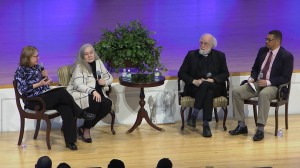

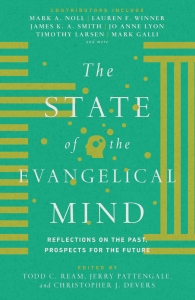 Perhaps I come to this book self-implicated, as a person brought up through the evangelical world and yet, as I presently find myself, striking out to live more fully in the intellectual / academic world, I too find Noll’s questions and concerns worth asking, even two decades on. As such, it is well past time that we re-consider the claims of Noll’s Scandal and ask whether the evangelical mind is still scandalously vacant, or if the cultural, social, and theological shifts of the early 21st century have proved beneficial for the movement? This new collection from IVP Academic seeks to address this question of contextualizing Noll twenty-five years later.
Perhaps I come to this book self-implicated, as a person brought up through the evangelical world and yet, as I presently find myself, striking out to live more fully in the intellectual / academic world, I too find Noll’s questions and concerns worth asking, even two decades on. As such, it is well past time that we re-consider the claims of Noll’s Scandal and ask whether the evangelical mind is still scandalously vacant, or if the cultural, social, and theological shifts of the early 21st century have proved beneficial for the movement? This new collection from IVP Academic seeks to address this question of contextualizing Noll twenty-five years later.
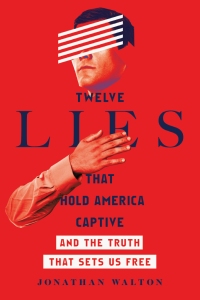


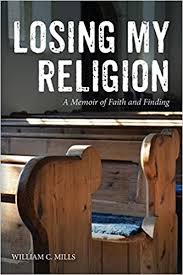

 Thus, when I began reading Haley Goranson Jacob’s first monograph, heralded as it was by N.T. Wright (who, we might note, was her adviser at St. Andrews), I was skeptical. Dissertations, after all, are written with a different audience in mind, with different assumptions and standards, even with different goals, than monographs (see a more thorough discussion on this
Thus, when I began reading Haley Goranson Jacob’s first monograph, heralded as it was by N.T. Wright (who, we might note, was her adviser at St. Andrews), I was skeptical. Dissertations, after all, are written with a different audience in mind, with different assumptions and standards, even with different goals, than monographs (see a more thorough discussion on this 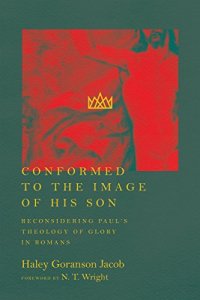 What is so revolutionary about Jacob’s thesis is that it is at once so surprising — no Protestant theologian (to my knowledge) has ever suggested that “the telos of salvation… is… glorification”! — and, yet, thanks to her incredibly precise and complete account, so sensible. It does not feel like a ground shift (it should!), since Jacob so thoroughly accounts for it from Paul’s thought, the apocalyptic literature, and the Old Testament.
What is so revolutionary about Jacob’s thesis is that it is at once so surprising — no Protestant theologian (to my knowledge) has ever suggested that “the telos of salvation… is… glorification”! — and, yet, thanks to her incredibly precise and complete account, so sensible. It does not feel like a ground shift (it should!), since Jacob so thoroughly accounts for it from Paul’s thought, the apocalyptic literature, and the Old Testament.

 Larsen’s familiarity with Victorian culture allows him the ability to comment on MacDonald with verve and context, constantly reminding readers that the Christianized Victorian world of our Dickensian memories is an illusion at best. MacDonald is pictured as an artful enchanter in a world where the Industrial Revolution’s cultural upheaval has brought to question the assumptions of Christian Britain. Various theological crises of the day and age are put under the microscope. I especially enjoyed the interplay of the Evangelical movement’s newfound (at that time) love for the doctrine of the Incarnation in contrast to their previous dedication to the doctrine of Redemption. MacDonald’s deep love for Christmas, privileging it beyond Easter, fits in a broader socio-theological conversation debated in Victorian Evangelical (and Nonconformist) churches.
Larsen’s familiarity with Victorian culture allows him the ability to comment on MacDonald with verve and context, constantly reminding readers that the Christianized Victorian world of our Dickensian memories is an illusion at best. MacDonald is pictured as an artful enchanter in a world where the Industrial Revolution’s cultural upheaval has brought to question the assumptions of Christian Britain. Various theological crises of the day and age are put under the microscope. I especially enjoyed the interplay of the Evangelical movement’s newfound (at that time) love for the doctrine of the Incarnation in contrast to their previous dedication to the doctrine of Redemption. MacDonald’s deep love for Christmas, privileging it beyond Easter, fits in a broader socio-theological conversation debated in Victorian Evangelical (and Nonconformist) churches.
